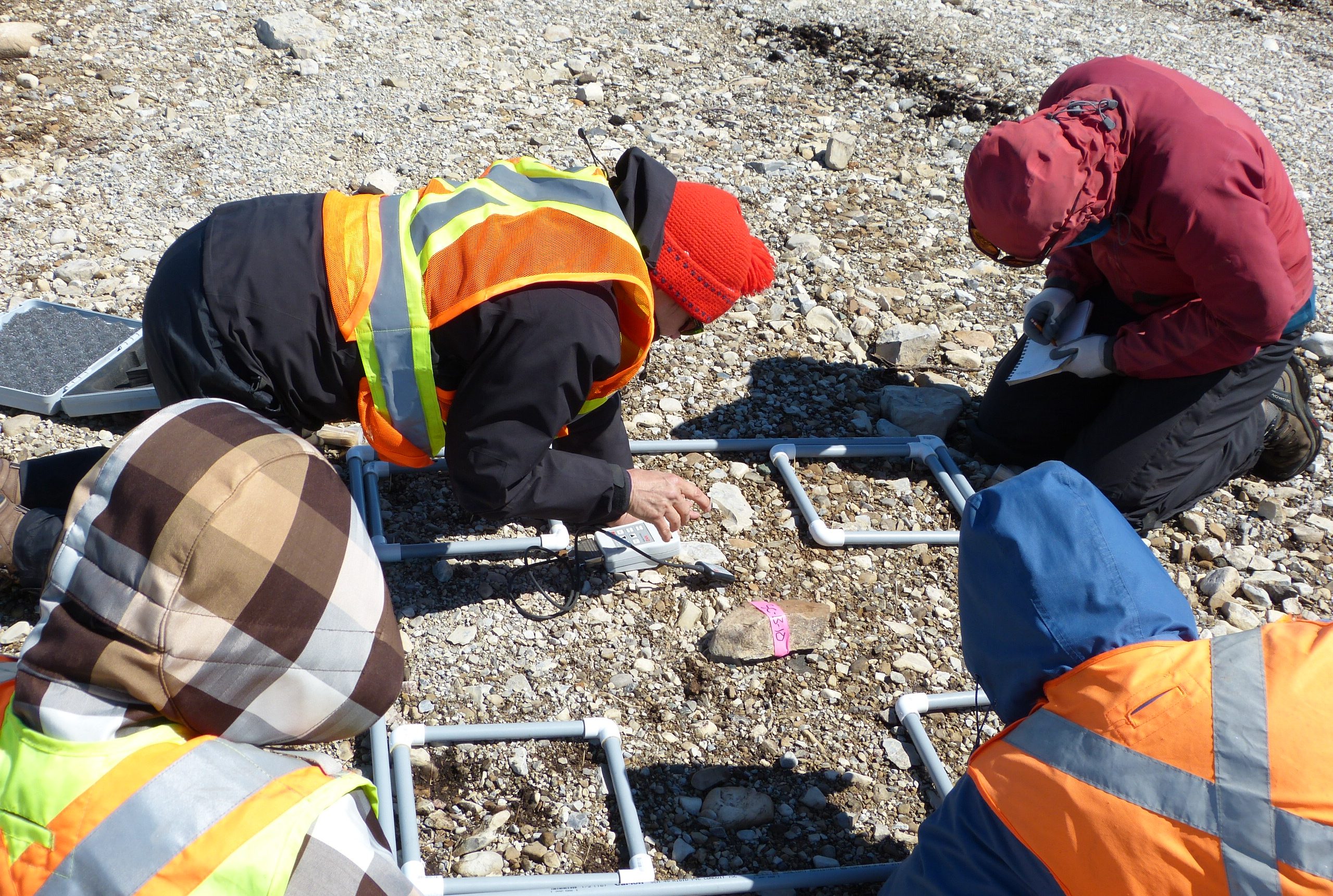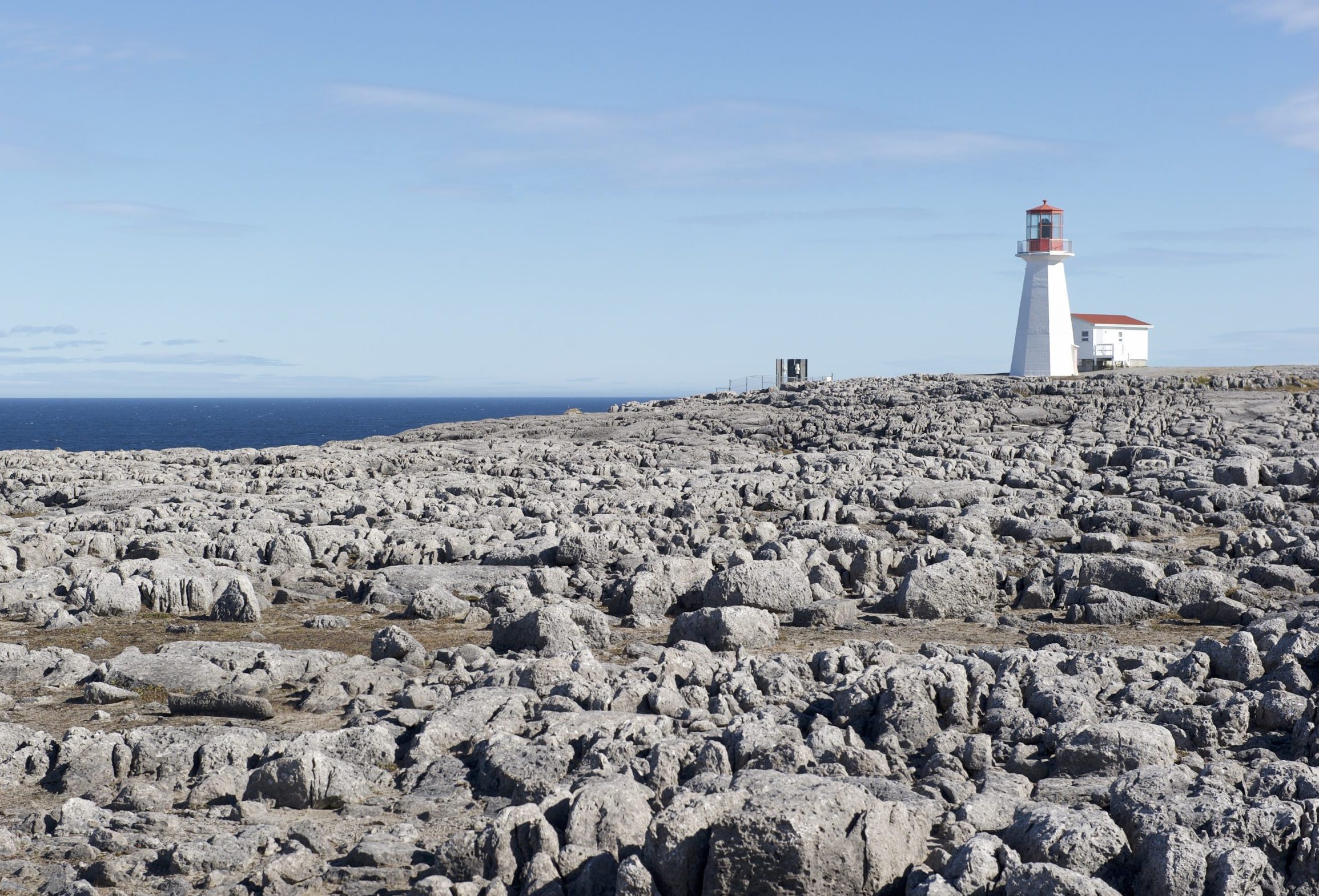Rockcress Recovery in the Not-so-barren Limestone Barrens
Embraced by the icy North Atlantic Ocean and scoured by high winds, the limestone barrens of Newfoundland’s Great Northern Peninsula can be a forbidding place. Weather is typically cold (23°F), foggy and raining in the middle of July. In fact, the barrens “can be a challenging place for fieldwork,” remarks Luise Hermanutz, PhD., retired professor at Memorial University of Newfoundland, In St. John’s, NL. This feels like an understatement (to say the least), yet the location does have its perks. Never far from a town, botanists laboring in the barrens find a welcome distraction in pods of killer whales swimming by. And, of course, working to conserve some of the rarest plants in the Canada is a reward in itself.
Lacking trees, the limestone barrens are a hotspot of floral diversity. Encroachment of the boreal forest would actually put this rare system at risk. The forest is kept at bay, in part, by repeated disturbance resulting from freeze-thaw dynamics and the icy wind. The limestone, a geographical remnant of tropical times and marine animal deposits, provides a unique substrate compared with the acidic boreal forest soils. Paired with the extreme weather, it breeds both endemism and rarity. The barrens are home to over 100 rare species ranked as critically imperiled (S1) or imperiled (S2) in the region. These include four species listed by Canada as endangered or threatened at the national level: Long’s northern rockcress (Braya longii), Fernald’s northern rockcress (Braya fernaldii), Barrens willow (Salix jejuna), and Griscom’s arnica (Arnica griscomii subsp. griscomii). The two Braya species have engaged much of the focus of Luise and her students, as both researchers and members of species recovery team assembled by the province.
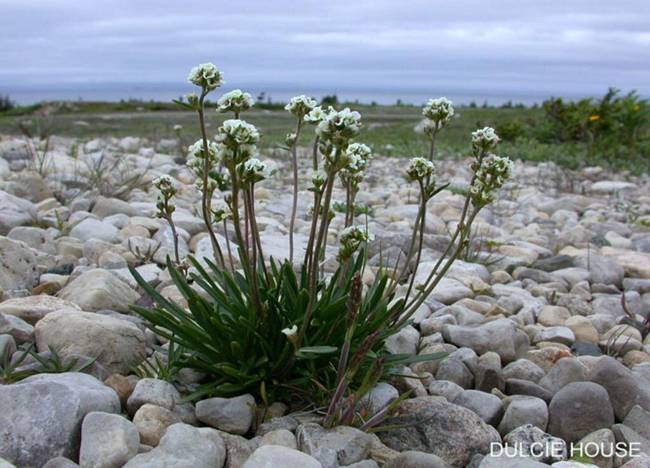
Initially described in the early 20th century, the two endemic species of rockcress were largely forgotten until rediscovered in the 1990s by botanist Sue Meades. Their presence in an area of frequent quarrying of gravel, and ATV activity, among other threats, led to quick recognition of the need to protect and recover the species. Looking very similar, both species are tiny–reaching a peak of three inches in the summer–with flowering stalks topped by clusters of four-petaled white flowers. These unassuming. plants are easy to miss in their gravelly habitat. Even the members of the recovery team understand the easy temptation to pull right into the habitat given it’s similarity to a drive-way. They patiently take the opportunity to educate the ATVers who approach them while they’re doing work to better avoid these special habitats.
Since that initial outing, the researchers and their partners have learned a great deal about the two species and made important steps towards their recovery. Luise’s studies have led to a better understanding of the region’s freeze-thaw dynamics. The upheaval and protrusions of needle ice are needed to prevent intrusion of the mat-forming woody plant species, but not so frequently that the rockcress themselves are uprooted. In this system, long roots–often five times the length of the above-ground plant and capable of actually contracting and pulling the plant back into the soil–give the rockcress an edge over its competitors.

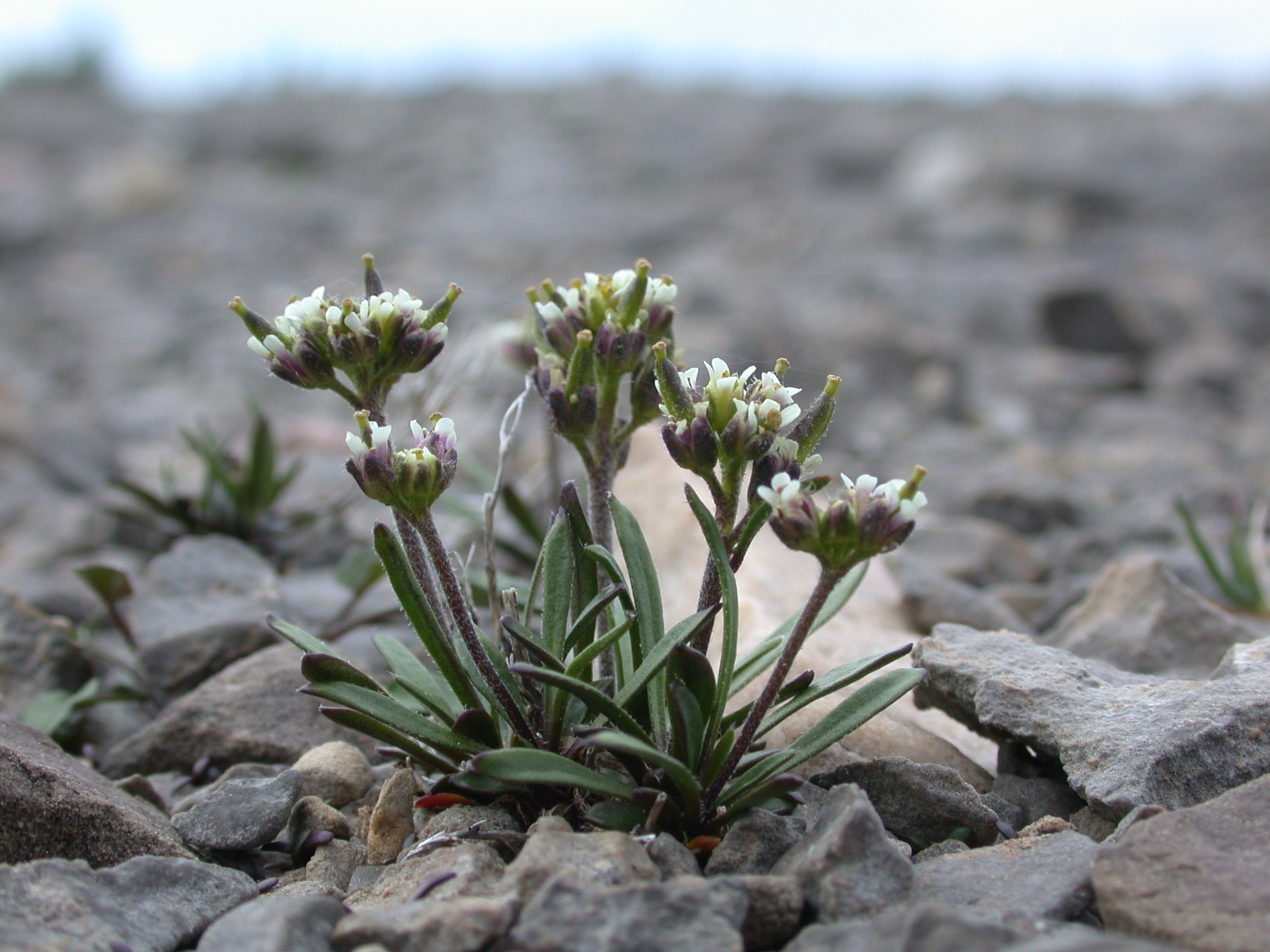
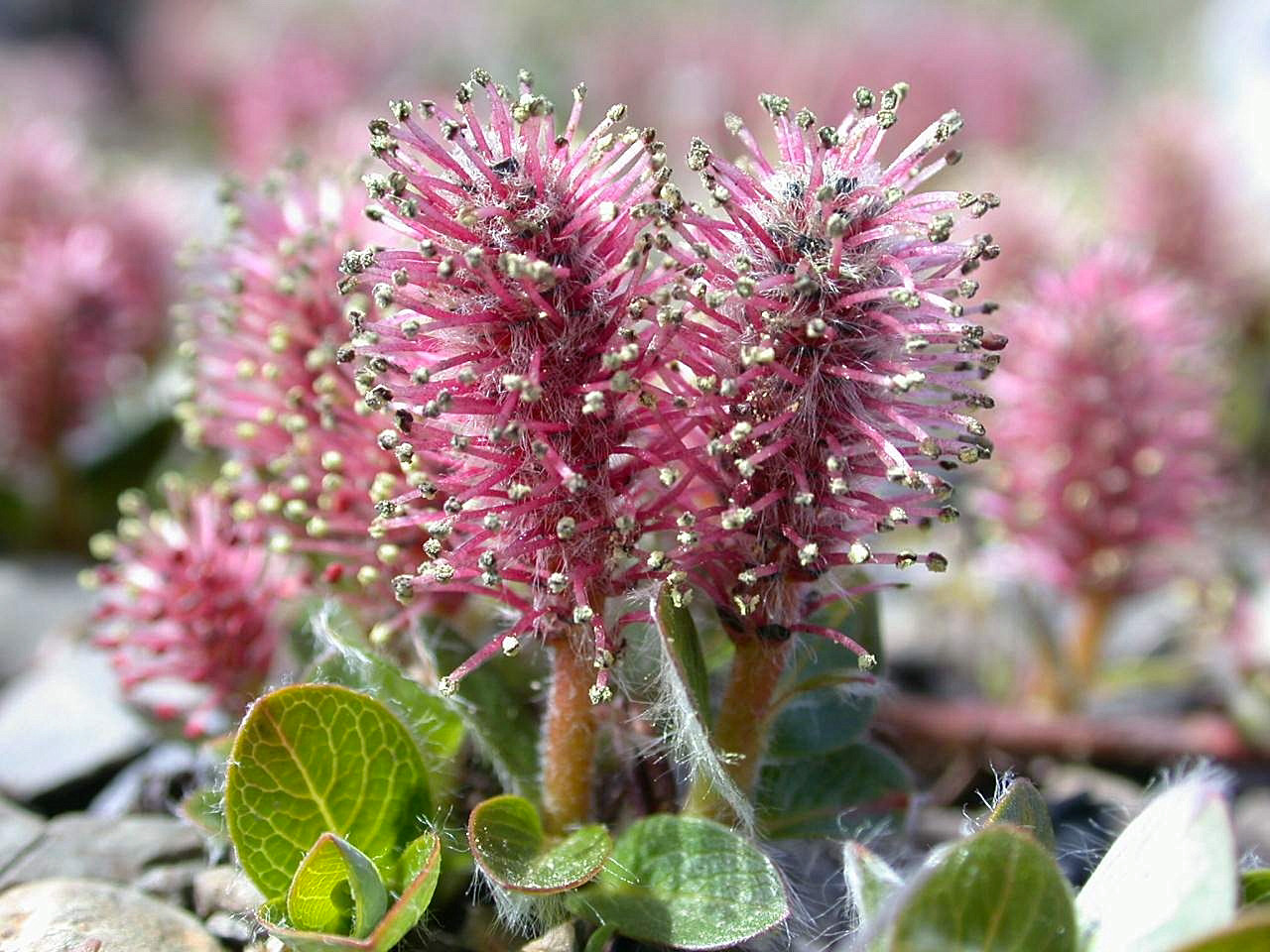
Given their adaptations to freeze-thaw soil disturbance, it may not be surprising that these rockcress species are capable of recolonizing areas disturbed by humans. However, Susan Squires, one of Luise’s PhD graduate students, discovered that recolonized populations have new challenges. The areas she surveyed were more densely populated by rockcress and contained bigger individuals, attracting invasive non-native pests such as the diamondback moth (Plutella xylostella), an agricultural pest, and a multitude of fungal pathogens. The recovery team is now working with plant pathologists to characterize the threat of pests and pathogens to populations of both species.
As a result, the seed collecting team from Memorial University of Newfoundland Botanical Garden (MUNBG) is making changes in how they target individual rockcress, using the lessons learned from the pathogen research to identify plants that aren’t infected to ensure a heathy seed stock. The MUNBG banks seed of both rockcress species, cuttings of the listed prostrate willow, and other collections of rare plants in the region, taking the lead on ex situ (off-site) conservation for listed rare species. These seed collections have already proven important for restoration work.
In 2016, Luise helped initiate an ambitious restoration project of the Long’s northern rockcress that is generating interesting results. Big machinery was required to remove large piles of overburden (topsoil removed during quarrying) to reshape the beach ridges to their former conformation. Next, tiny rockcress seeds were added systematically in plots, where they awaited a freeze-thaw push to reach the surface and germinate. A comparison of soil temperatures at the newly created habitat and natural habitat indicates that the soils are responding similarly to the weather and experiencing the same freeze-thaw dynamic. Approximately 12% of the added seeds have germinated–an encouraging result, at the high end of expectations for direct seeding efforts.

Luise and her team will continue to monitor the restored plants’ health and reproduction, often lying nose to the ground in harsh conditions to find emerging seedlings. Although it’s still early, hope is also emerging –hope that the conservation efforts for these two unique species will keep the rockcresses flourishing in their special habitat for generations to come.
